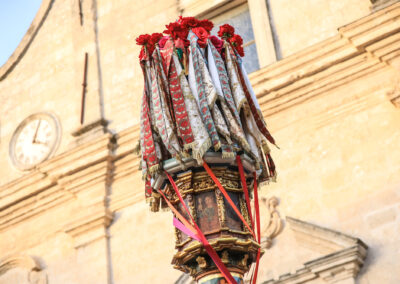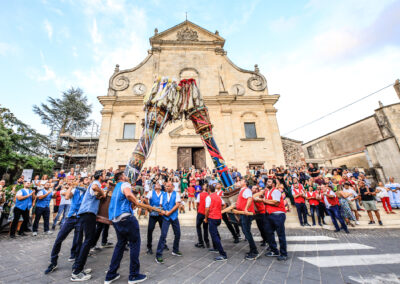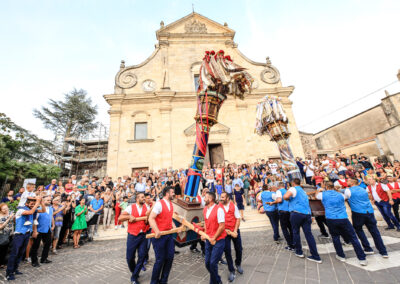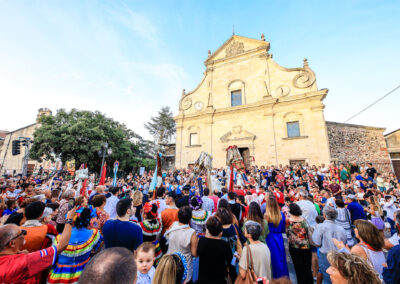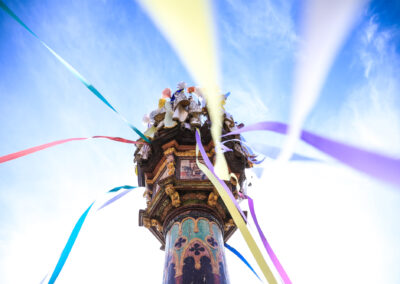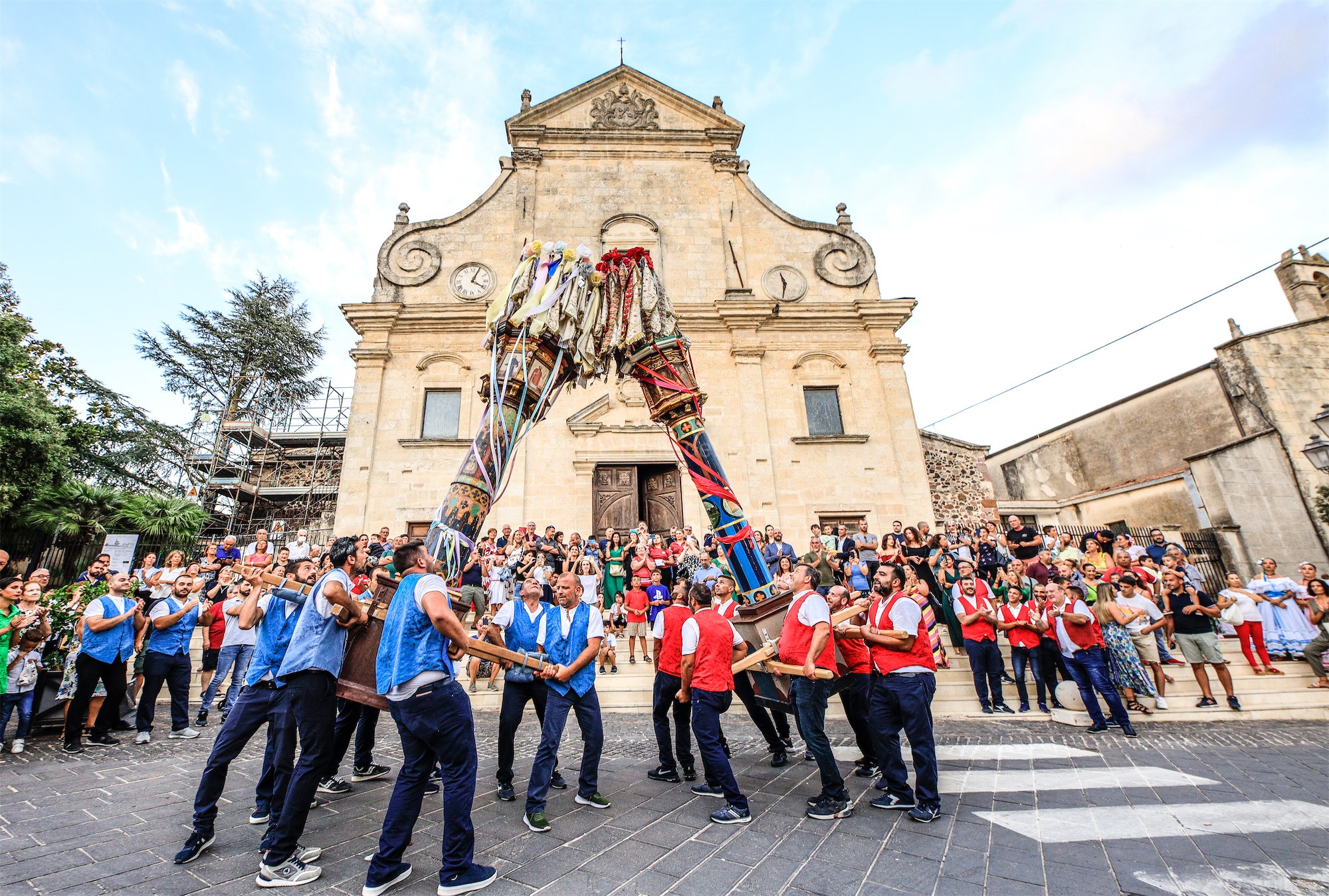
Ploaghe
The Candelieri
Ploaghe is one of the few centres in Sardinia that has kept alive the old tradition of offering church candles for the Assumption of Mary. A unique aspect of the tradition of the Candelieri, the votive candles belonging to the Guild of Farmers and the Guild of Shepherds, is represented by the double procession called “Sa essida de sos Candeleris” (tn* procession of the Votive Candles): they are carried in procession on the day of Corpus Domini, on the 15th of August, and on their respective Octaves, the eighth day after the feast. We can affirm that the Votive Candles of Ploaghe have existed for more than three centuries. Important evidence of this comes from the rector Salvatore Cossu, parish priest of Ploaghe from 1827 to 1868, who declared that in 1580 the Town Council and the Ecclesiastical Authorities formulated a vow, obligating the Guild of Farmers and the Guild of Shepherds to absolve all the fulfilments and pay for the expenses. Each Votive Candle is made of two parts: the pedestal, 1 meter high and completely made of wood, and a hand decorated wooden cylinder with sacred images. On the top of the Votive Candle, the Guild of Farmers has a simulacrum of Christ Child, instead, the Guild of Shepherds has Saint Peter, patron saint of Ploaghe. The Candelieri are decorated with paper roses and flags, bright colours for the farmers and pastels for the shepherds. The presidents of the Guilds, the obrieri, who in Ploaghe are called “Candaleraju”, were traditionally chosen by extraction on the day of Corpus Domini, while those for the following years were chosen on the day of the Assumption. After his sermon, the Parish priest would draw the names of the master-craftsmen who aspired to the title of obriere, eight couples in total, four per Guild, then he assigned the Votive Candle to one of them. The obrieri took care of the preparations for the celebration, first of all the creation of the silk banner “Su Ziriu”, finely embroidered with gold, which draped the Votive Candle that the obrieri led in procession. In the houses of the obrieri, the simulacrum of the Christ Child and the simulacrum of Saint Peter were shown on cushions of brocade for the visiting of family and friends to see. The simulacra would be covered with the flags that decorated the dome of the Votive Candle: the flags of the consolidated families on one side and the flags of the new ones on the other. For “Sa Essida”, the leaving procession, that is the procession of the Candelieri, it was also necessary to send for the Candle bearers called “Sos de Sutta”, (tn* Those Below), who offered to carry the Votive candles during the entire procession, ending with the “dances” of the two Candelieri in the Square of Saint Peter. The bearers received no monetary compensation, but one fourth of a sheep, a rich dinner and abundant food and drink during the whole procession: this occasion was interpreted as a good sign for the whole community. Another peculiar feature sees the Candeliere of Saint Peter guide the procession from the front for the eleven stops, until just before the twelfth, it lets the other Candeliere with the Christ Child go ahead, giving it the honour of entering the church first.
Source: website of the Town Council of Ploaghe; book “Votive Candles and Candelieri of Sardinia” (in Italian), by Giovanni Gavino Fois and Fabio Manuel Serra
- Tomb of the Giants Fiorosu
- The Candelieri
- Church of Saint Peter
- Church of Saint Anthony of Salvennor
- Church and convent of Saint Anthony of Padua
- Church of Saint Michael of Salvennor
- Monumental cemetery
- Funtana Manna (tn* Big Fountain)
- The Oratory of the Rosary
- Church of Saint Matthew
- Nuragic Fountain of Frades Mareos

